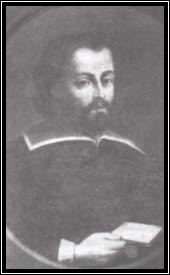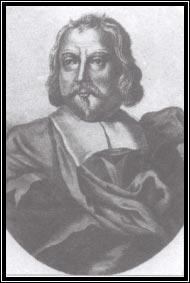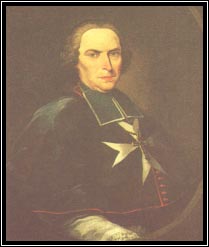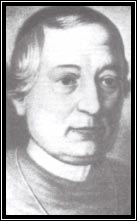There are a lot of debates about the early beginnings of Our Lady of Mellieħa. The devotion to this painting increased a lot during the centuries and this resulted in the building of a sanctuary dedicated to Our Lady of Mellieħa.
According to a very old tradition the highly venerated Marian Sanctuary of our Lady of Mellieħa goes back to St. Paul’s shipwreck in the 1 st century AD. The tradition says that the sanctuary was blessed by St. Paul the Apostle after he had landed in Malta. Apart from this, the tradition continues that the icon of our Lady painted on the bare rock is the work of St. Luke the Evangelist. This theory is strengthened by later important persons like Mons Pirri (1630), Gian Frangisk Abela, Giacomo Bosio, Count G.A. Ciantar and Mons O. Bres.1
Meanwhile, a number of experts of the Marian iconography attribute this style of painting to the early beginnings of Constantinople.2 On the other hand,
Mario Buhagiar says that although this is one of the earliest surviving icon of the Virgin painted on the rock, it is Byzantine in inspiration but Sicilian or Southern Italian in execution. The icon is stylistically datable to the late 13 th or early 14 th centuries and it displays a close iconographic similarity with several apparently coeval murals of the Madonna in the rock-cut churches of eastern Sicily.3
There are two legends telling about a consecration that happened in the early Medieval Period. This is mainly attributed to the fact that there is a painting in the sanctuary ceiling showing a number of bishops. It is believed that they represent twelve bishops who according to a pious legend visited the cave sanctuary
while on their way to a Council at Milevo, near Carthage in 416. Seven crosses painted on the walls are claimed, on no evidence, to indicate that these twelve bishops consecrated the cave.4 Another legend says that this cave-church was consecrated by a number of Byzantine bishops, after they had landed in Mellieħa Bay with general Belizarius. It is important to say here that Belizarius was that Byzantine general who was sent by Emperor Justinian to reconquer the lost western provinces of the Roman Empire. These western Roman provinces were captured by a number of German Barbarian tribes.5
 |
|
Important visitors are said to have included King Ferdinand IV (1373), King Martin (1408), King Alfonso (1432), Viceroy Lupo Ximenez (1468), Ferdinand d’Acuna (1490) and much later Bishop Lavigerie, Nicola Speciale and St. Benedict Joseph Labre, who was visiting the Marian sanctuaries of Europe.6 There is a legend around King Alfonso’s visit in 1432. It says that a number of bishops accompanied King Alfonso of Aragon when he stopped in Malta in 1432. The legend continues that those painted crosses on the rock testify their consecration. Apart from these crosses there is the painting of twelve bishops.7
Therefore, we are not certain who had made and when it was done this Marian icon. But the message behind Our Lady of Mellieħa is related with the Council of Ephesus in 431 AD. In this Council Our Lady was declared the God’s Mother and that is why we see her with baby Jesus Christ on her arms.8
In 1436, Mellieħa was one of the ten parishes mentioned in the financial report presented to Bishop Senatore de Mello. Apart from this report Gian Francesco Abela says that this sanctuary was already a parish church in 1436. It extended as far as Mosta. In this period Fr. Luke Camilleri was the parish priest of the Sanctuary of Our Lady. However, as Mellieħa was exposed too much to the frequent attacks of the Ottomans and pirates, in 1551 it was annexed to the parish of Naxxar.9
|
Bishop Baldassar Cagliares
|
In the later stages of the Great Siege of Malta in 1565, Don Garcia de Toledo landed with his relieving force at Mellieħa Bay. He took the opportunity to visit the sanctuary on the 7 th September.10 Some ten years later Mgr. Dusina visited the sanctuary and he reported the sorry state of the sanctuary in 1575. He stated that Mellieħa was only parish church in name11 and there wasn’t any rector, without any income and quite bare.12 This is because there were no people living in this village. All the people of Mellieħa were terrified by the frequent Muslim pirates’ attacks. Therefore they took refuge in central Malta.13
A couple of years later, Mellieħa formed part of the cathedral of Mdina. At this period, as the sanctuary was abandoned and in 1584 Friar Aurelio Asciaq, an Augustinian, asked his Order to give him permit to built a convent near the church. He was given permit and he built a convent. From now four Augustinian friar began to take care of the church. The Augustinian friars remained in Mellieħa till 1603,14 when Bishop Gargallo appointed Fr. Bernard Cassar as rector.15
 |
Grand Master Nicholas Cotoner
|
On 6 July 1614, a number of Muslim galleys entered Mellieħa Bay and landed there and sacked the Mellieħa sanctuary. Bishop Balaguer, writing some forty years later, recounted how one of the attackers, on recovering from a serious illness which he considered to be a punishment for his part in the raid, sent a votive candle to the sanctuary.16 Another Pastoral Visit was made on 28 January 1618 by Bishop Mons. Baldassar Cagliares. He declared that the sanctuary was dedicated to Our Lady of Mellieħa. Although Mellieħa parish church had no power, Fr. Vincent Borg was referred as the parish priest. He asked the rector Fr. Vincent Borg about the state of the painting. Bishop Baldassar made a reference also on a statue made of wood representing Our Lady with baby Jesus Christ on her arms.17 Some eighteen years later, on 31 January 1636, Inquisitor Mons. Fabio Chigi went to prey in front of our Lady of Mellieħa. Later Fabio Chigi was proclaimed Pope Alexander VII.18
Many important personalities of Malta went to visit the sanctuary of Our Lady. Grand Master Alof de Wignacourt went every Saturday to prey in front of Our Lady. Grand Masters Raphael and Nicholas Cotoner were also benefactors of the Sanctuary. There were also a number of individual knights who donated gold or silver items.19 One of them Knight Tancredi gave a golden eight-pointed cross to the sanctuary.20
In 1677 Inquisitor Erkole Visconti made a reference to the devotion for the Sanctuary of our lady of Mellieħa. This reference was made after the Maltese islands had suffered a plague a year before, where 11,000 Maltese died. Apart from the plague the islands suffered also from drought. The Maltese made a national vow that if the Maltese islands were liberated from the plague, they would prey in front of Our Lady of Mellieħa. So, on 20 April 1677 a large number of Maltese arrived in Mellieħa and preyed in front of Our Lady to thank her, but they also preyed her for rain. A few days later rain descended over the Maltese islands.21 The same Inquisitor Visconti made references that Grand Master Nicholas Cotoner was a devotee of Our Lady of Mellieħa. He said in one of his reports that on 21 April 1677 Grand master Nicholas Cotoner visited Mellieħa and went to prey in front of Our lady of Mellieħa.22
 |
Bishop Alpheran de Bussan
|
Three years later, in 1680 Bishop Molina visited the sanctuary of Our Lady of Mellieħa. In his document after he had visited Mellieħa he made a list of small chapels that formed part of Mellieħa Parish. In the document he said that Mellieħa parish included a large track of land from Cirkewwa to Mosta. There were a number of small chapels and these included the chapels of St. Paul (Mosta), St. Andrew the apostle, St. George, St. Philip, St. Catherine and many others. From his document we know that although the church was very far from the inhabited areas, many continued to visit and prey in front of Our lady of Mellieħa.23
On 30 October 1729 the French Bishop of Malta Alhperan de Bussan, visited the sanctuary too. He wanted that if someone was to visit Mellieħa, he would find some commodity, after he had travelled a lot to arrive in the village. When he arrived at the entrance of the church, the Bishop was welcomed by Fr. Domenic Farrugia, the rector of the sanctuary.24 After he had visited the church he went on his horse to the Port of Mellieħa Bay, where a galley was waiting for him, and continued his trip to the Grand harbour.25
|
The arch erected after a national pilgrimage to the sanctuary in 1718
|
Bishop de Bussan strived to enlarge the church and he asked Michael Micallef to prepare a plan for the enlargement of the sanctuary. In early 1744 Fr. Domenic Farrugia got to know that on the 28 May of the same year there was to be a pastoral visit by the Bishop of Malta. The procurators of the Church wanted to consecrate the sanctuary during his visit. So, the procurators Fr. Alwig Gauci and Fr. Vincent Galea wrote a statement to the Bishop, telling him about the history of the sanctuary. Bishop Alpheran was in favour of that consecration. It was not done in that year, but three years later in 1747, when he returned to Malta. The sanctuary was consecrated on 22 may 1747. The ceremony of the consecrated took five hours to complete.26 From this period onwards the donations to the sanctuary continued to increased, which included paintings and other items.27 After the Hospitallers were forced to leave the Island by the French, the latter were too forced to surrender by the Maltese insurgents with the help of the British navy and army. The early colonial period of Malta saw no changes for the Sanctuary of our Lady of Mellieħa. In 1827, Philip Laferla re- painted the painting of the bishops. At this period the sanctuary was enlarged for another time.28
 |
Bishop Francesco Saverio Caruana
|
On 1840, the Bishop of Malta, Francesco Saverio Caruana, wrote to Pope Gregory XVI to ask him to declare Mellieħa as a parish church because the population of Mellieħa was increasing. We have to bear in mind that at this time Mellieħa was again forming part of Naxxar parish church. The first parish priest of Mellieħa of this period was Fr. Paul Le Brun. The sanctuary continued to be enlarged.29
|
The sanctuary court-yard.
|
When Fr. Le Brun resigned, Fr. Joseph Baldacchino was appointed as the second parish priest of the village. During his period a titular statue of Our Lady of Victory was made by sculptor Pietro Paolo Azzopardi and it was finished on 6 September 1853. Another statue is that of our Lady of Rosary, which was made in 1859. A clock was made by the British Governor on the sanctuary. Fr. Baldacchino died on 31 December 1879. Another priest was appointed and this was Fr. Francis Magri. He took the decision to build a large church for the Mellieħa community.30 But that is another story.

